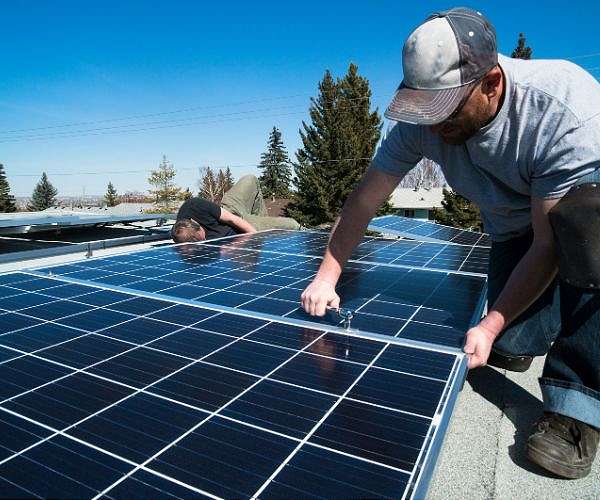American solar rates can stimulate the transition tree of Asia
Solid planned American tasks on solar panels in Southeast Asia can be a chance for the region to increase its own long-term energy transition, experts say.
Earlier this month, Washington announced plans for hefty tasks on solar panels made in Cambodia, Vietnam, Thailand and Malaysia.
The levies follow an investigation before the US President Donald Trump took office, in “unfair practices” in the countries, in particular by Chinese companies.
If approved next month, they will stack at rates that have already been imposed by the Trump administration, including blanket 10 percent taxes for most countries, and 145 percent on Chinese goods made.
The consequences are probably serious for the American market. China makes eight of every 10 solar panels worldwide and controls 80 percent of every phase of the production process.
The new rates “will practically make solar energy to us impossible commercial,” said Putra Adhiguna, director of the Energy Shift Institute think tank.
Southeast -Asia accounted for almost 80 percent of the import of the American solar panel in 2024.
And although the investments in solar production have been raised in the United States in recent years, the market is still highly dependent on imported components.
For Chinese manufacturers, who are already dealing with a saturated domestic market, the series of rates is potentially very bad news.
Many shifted operations to Southeast Asia in the hope of avoiding punitive measures imposed by Washington and the European Union, while trying to protect and cherish the domestic solar industry.
The proposed new tasks vary from around 40 percent for some Malaysian exports to an eye-watery 3,521 percent for some manufacturers in Cambodia.
– rates ‘accelerate’ transition –
But there can be a silver lining for the region, Ben McCarron explained, director of Asia Research & Engagement.
“The rates and trade war will probably speed up the energy transition in Southeast Asia,” he said.
China will overload “efforts” on regional markets and insist on policy and implementation plans to “enable rapid acceptance of green energy in the region”, powered by the exporters.
Analysts have long warned that countries in the region move too slowly to switch from planet -warming fossil fuels such as coal.
“At the current pace, the (Southeast Asia) threatens to miss the opportunities offered by the falling costs of wind and sun, now cheaper than fossil fuels,” said Energy Think Tank Ember in a report last year.
For example, Malaysia relied on fossil fuels for more than 80 percent of its electricity generation last year.
By 2030 it wants to generate 24 percent from renewable energy sources, a target that has been criticized as from the pass with worldwide climate goals.
The tariff regime offers a double chance for the region, Muyi Yang, Senior Energie Analist, said at Ember.
Until now, the local solar industry was “largely opportunistic, aimed at utilizing domestic resources or work benefits for export wins,” he said AFP.
Displayed from the American market, instead it can concentrate on local energy collections, whereby the absorption of green energy is accelerated locally and controls a new market that could “serve as a natural hedge against external volatility”.
However, replacing the American market will not be easy, given the size and relatively emerging state of renewable energy sources in the region.
“Success depends on the converting of this momentum-led momentum into a van-country Cleantech revolution,” said Yang.
“Cleaning prices” can be attractive for some, but countries in the region and then can also be careful with a stream of solar energy, Adhiguna said.
Large markets such as Indonesia and India already have measures that are intended to promote domestic solar production.
“Many will hesitate to en masse, prioritize the trade balance and are intended to create local green jobs,” he said.

